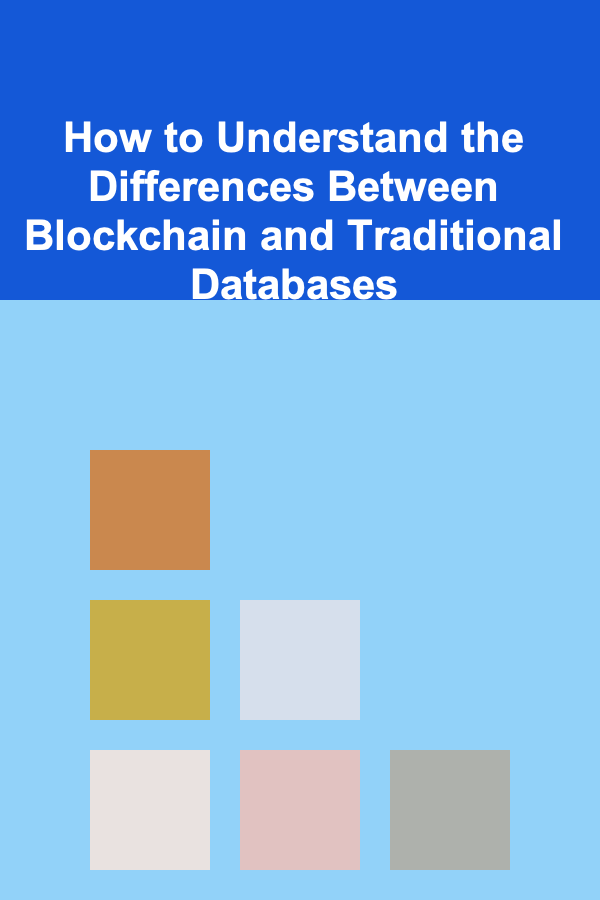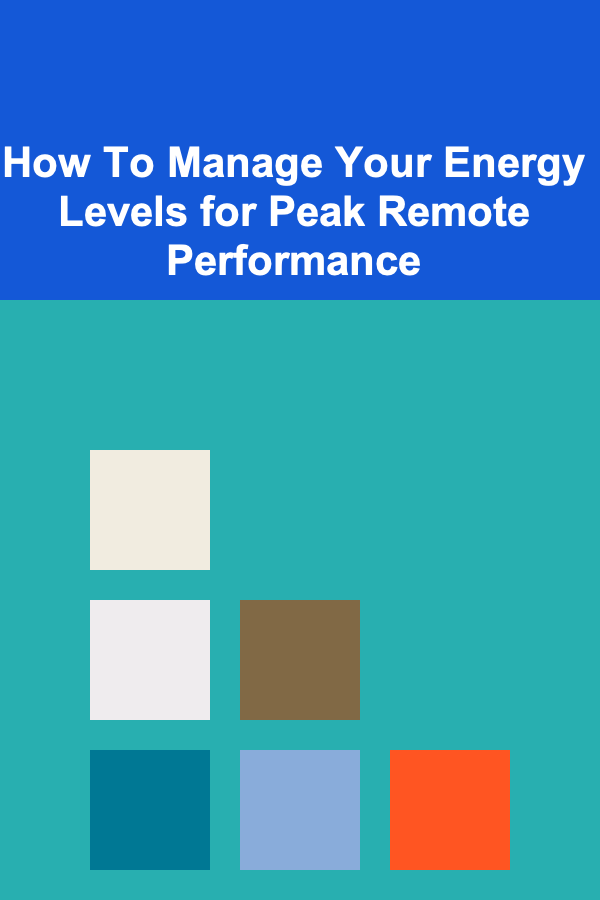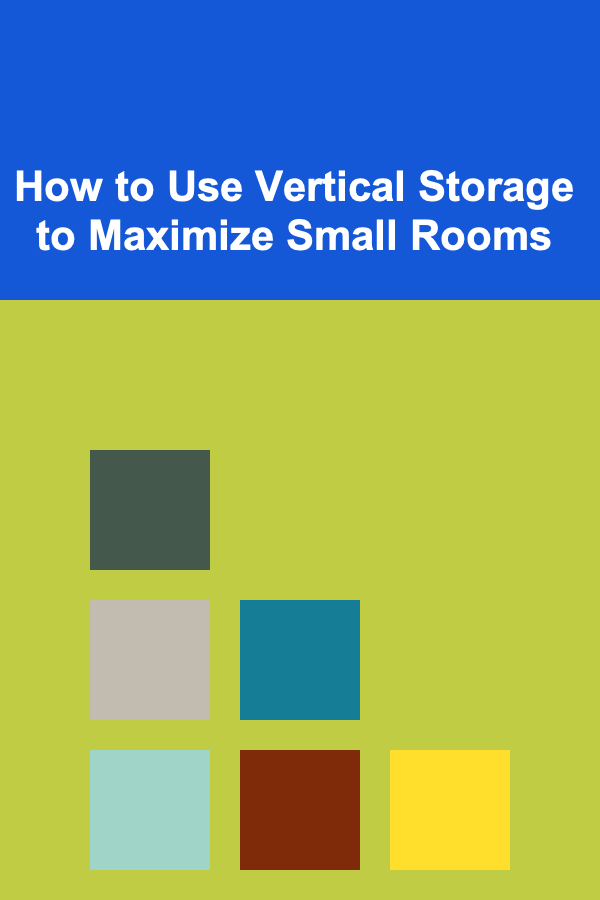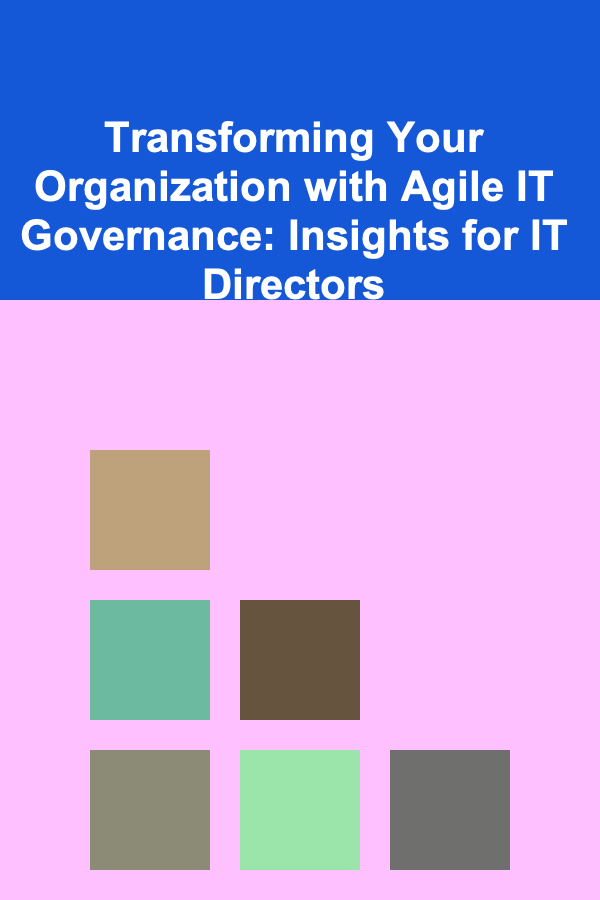
How to Understand the Differences Between Blockchain and Traditional Databases
ebook include PDF & Audio bundle (Micro Guide)
$12.99$9.99
Limited Time Offer! Order within the next:

In the modern world of technology, data management has become a central pillar for organizations and individuals. With the rapid rise of blockchain technology, a question arises: how does blockchain differ from traditional databases? This question is not just a matter of technological curiosity but of critical importance, as both systems play essential roles in the management of data in various industries.
Understanding the differences between blockchain and traditional databases requires a look into their architecture, functionality, use cases, and underlying principles. This article will explore these differences in-depth, breaking down the core components and functionalities of both systems, as well as their advantages, challenges, and the potential for disruption.
Overview of Traditional Databases
Traditional databases have been the backbone of information storage and management for decades. These databases can be classified into several types, such as relational databases (RDBMS) and non-relational databases (NoSQL). The fundamental objective of traditional databases is to store, retrieve, and manage large volumes of structured data.
1.1 Architecture of Traditional Databases
Traditional databases often use a centralized architecture. This means that a central server or cluster of servers handles all operations related to data management. Clients or users send requests to this central server, which processes the data and returns the results. The architecture can be broken down into the following layers:
- Data Storage: Where the actual data is stored, typically on disk storage.
- Database Engine: The software layer that handles the logic of querying, inserting, updating, and deleting data.
- Query Interface: The interface through which users interact with the database, often using languages such as SQL (Structured Query Language).
- Security and Access Control: The mechanism that controls who can access the data and what actions they are allowed to perform.
1.2 Functionality of Traditional Databases
Traditional databases allow users to perform operations like:
- CRUD Operations: Create, Read, Update, and Delete operations are the foundation of interaction with traditional databases.
- ACID Transactions: Traditional databases often follow the ACID (Atomicity, Consistency, Isolation, Durability) properties, ensuring reliable transactions and data integrity.
- Scalability: While traditional databases are highly scalable, scalability often comes with complex configurations and hardware requirements.
1.3 Use Cases of Traditional Databases
Traditional databases have been widely used in applications such as:
- Business Applications: Storing customer information, sales transactions, employee records, etc.
- Financial Systems: Transactional data processing, account management.
- Enterprise Resource Planning (ERP): Integrating various business functions into a unified system.
- E-commerce: Managing inventory, orders, and user data.
Despite their widespread usage, traditional databases are centralized, meaning a single point of failure exists. This reliance on central servers raises security, data integrity, and availability concerns.
Overview of Blockchain Technology
Blockchain is a relatively newer technology, introduced as the underlying structure of Bitcoin in 2008 by an individual or group known as Satoshi Nakamoto. Blockchain offers a decentralized approach to data management, making it radically different from traditional databases.
2.1 Architecture of Blockchain
Blockchain operates on a decentralized architecture where data is distributed across multiple nodes (computers) in the network. Each node maintains a copy of the entire blockchain, making it resilient to tampering and failure. The structure of blockchain can be broken down into the following layers:
- Blocks: A blockchain is made up of blocks, which are containers for batches of transaction data. Each block contains a timestamp, a list of transactions, and a reference (hash) to the previous block.
- Chain: Blocks are linked in a sequence, creating a chain of blocks. The integrity of the chain is maintained by cryptographic hashing.
- Consensus Mechanism : Blockchain relies on a consensus algorithm to validate and agree upon the contents of the blocks. Common consensus mechanisms include Proof of Work (PoW) , Proof of Stake (PoS) , and Practical Byzantine Fault Tolerance (PBFT).
- Nodes: Each participant in the blockchain network is called a node. Nodes maintain a full copy of the blockchain and participate in validating transactions.
- Cryptographic Hashing: Each block is linked to its predecessor using a cryptographic hash, ensuring the integrity of the blockchain.
2.2 Functionality of Blockchain
Blockchain offers functionalities like:
- Decentralization: Blockchain does not rely on a central authority. Instead, control is distributed across multiple participants (nodes).
- Immutability: Once data is recorded in the blockchain, it is very difficult (if not impossible) to alter. This immutability is ensured through the use of cryptographic techniques and consensus protocols.
- Transparency: Transactions on the blockchain are visible to all participants, providing a transparent and verifiable record.
- Security: Blockchain uses encryption and cryptographic hashing to secure data and ensure trust between participants.
2.3 Use Cases of Blockchain
Blockchain is best known for its role in cryptocurrencies like Bitcoin and Ethereum, but its potential extends far beyond that. Some of its key use cases include:
- Cryptocurrencies: Blockchain enables the creation and management of decentralized digital currencies like Bitcoin, Ethereum, and others.
- Supply Chain Management: Blockchain can track goods as they move through the supply chain, ensuring transparency and reducing fraud.
- Smart Contracts: Blockchain enables self-executing contracts with predefined rules, allowing parties to execute agreements without intermediaries.
- Voting Systems: Blockchain offers a secure and tamper-proof way to conduct elections and secure voting processes.
- Healthcare Data Management: Blockchain can provide a secure, interoperable system for storing and sharing patient data between healthcare providers.
Key Differences Between Blockchain and Traditional Databases
Now that we understand the basic concepts of both blockchain and traditional databases, we can explore the key differences that set these two systems apart.
3.1 Architecture and Centralization
- Traditional Databases: Centralized. Traditional databases rely on a central authority or server to manage the data. This central point of failure makes traditional databases vulnerable to hacking, corruption, and data loss.
- Blockchain: Decentralized. Blockchain operates on a distributed network where each participant (node) has a copy of the entire blockchain. There is no central point of failure, making the system more resilient and secure.
3.2 Data Integrity and Immutability
- Traditional Databases: Data can be altered or deleted by users with the right permissions. Although traditional databases can implement security measures like access control, they are still vulnerable to data tampering by insiders or malicious actors.
- Blockchain: Once data is recorded in a blockchain, it is extremely difficult to alter. Blockchain's immutability is ensured by the consensus mechanism and cryptographic hashes, making it ideal for situations where trust and data integrity are critical.
3.3 Transparency and Access Control
- Traditional Databases: Transparency is typically restricted to users who have specific access permissions. Access control can be implemented, but the database is inherently opaque to unauthorized users.
- Blockchain: Blockchain provides transparency by allowing all participants to view the transactions recorded in the blockchain. However, the transparency of blockchain does not mean that data is public; it is accessible only to those who have the appropriate permissions or access rights.
3.4 Transaction Speed and Scalability
- Traditional Databases: Traditional databases are optimized for speed and can handle a large number of transactions per second (TPS) with low latency. They are highly scalable, especially in centralized environments where powerful servers can handle growing workloads.
- Blockchain: Blockchain, particularly those based on Proof of Work, faces challenges in transaction speed and scalability. The process of reaching consensus on transactions can be slow, with some blockchains processing only a handful of transactions per second (TPS).
3.5 Security
- Traditional Databases: Security is enforced through access control mechanisms such as usernames, passwords, encryption, and firewalls. However, the security is only as strong as the central server and can be compromised if an attacker gains access to the central database.
- Blockchain: Blockchain's security is built on cryptographic principles. Transactions are encrypted, and the consensus mechanism ensures that the data cannot be tampered with by any single participant. Blockchain's decentralized nature makes it inherently more secure than centralized databases.
3.6 Use Case Suitability
- Traditional Databases: Ideal for applications where centralized control, speed, and scalability are crucial, such as in banking, e-commerce, and ERP systems.
- Blockchain: Best suited for applications where decentralization, transparency, and immutability are paramount, such as in cryptocurrencies, supply chain tracking, and voting systems.
Advantages and Challenges of Blockchain vs. Traditional Databases
4.1 Advantages of Blockchain
- Decentralization: Eliminates the need for a central authority, reducing the risk of fraud and single points of failure.
- Immutability: Once data is recorded, it cannot be easily changed, making it suitable for applications where trust and data integrity are essential.
- Transparency: All participants can verify and audit transactions in real-time.
- Security: Blockchain's cryptographic nature ensures high levels of data security.
4.2 Challenges of Blockchain
- Scalability: Blockchain networks can struggle to handle large volumes of transactions at high speed.
- Energy Consumption: Consensus mechanisms like Proof of Work can consume a significant amount of energy, leading to concerns over sustainability.
- Complexity: The decentralized and cryptographic nature of blockchain adds complexity, requiring specialized knowledge to implement and manage.
4.3 Advantages of Traditional Databases
- Speed: Traditional databases are optimized for high transaction throughput and low latency.
- Scalability: Centralized systems can easily scale horizontally or vertically to accommodate increased load.
- Familiarity: Traditional databases are widely understood, with a vast ecosystem of tools, experts, and resources available.
4.4 Challenges of Traditional Databases
- Single Point of Failure: The reliance on a central server creates vulnerabilities in terms of downtime, data loss, and hacking.
- Data Integrity: Centralized systems are prone to manipulation and unauthorized changes, especially when security is compromised.
Conclusion
The differences between blockchain and traditional databases are profound, ranging from their architecture to their use cases. Blockchain offers a decentralized, transparent, and immutable approach to data management, making it ideal for applications that require trust, security, and transparency. On the other hand, traditional databases remain the go-to solution for applications that demand high performance, scalability, and the ability to handle large-scale data management tasks.
As technology continues to evolve, the potential for hybrid systems that combine the best of both worlds may emerge, further expanding the possibilities for data management. Understanding these fundamental differences is essential for businesses and developers to make informed decisions about which technology to adopt based on their specific needs.

How to Create a Family Bucket List for Winter Adventures
Read More
How To Manage Your Energy Levels for Peak Remote Performance
Read More
How to Use Vertical Storage to Maximize Small Rooms
Read More
Transforming Your Organization with Agile IT Governance: Insights for IT Directors
Read More
How to Understand the Genetics of Diabetes
Read More
How to Aquascape a Dutch Style Aquarium: A Detailed Guide
Read MoreOther Products

How to Create a Family Bucket List for Winter Adventures
Read More
How To Manage Your Energy Levels for Peak Remote Performance
Read More
How to Use Vertical Storage to Maximize Small Rooms
Read More
Transforming Your Organization with Agile IT Governance: Insights for IT Directors
Read More
How to Understand the Genetics of Diabetes
Read More